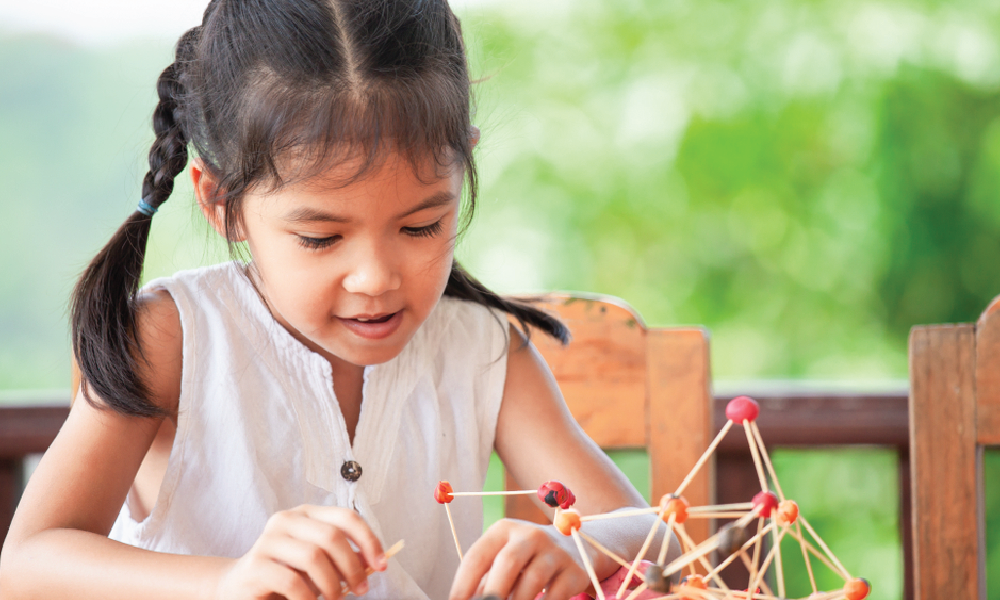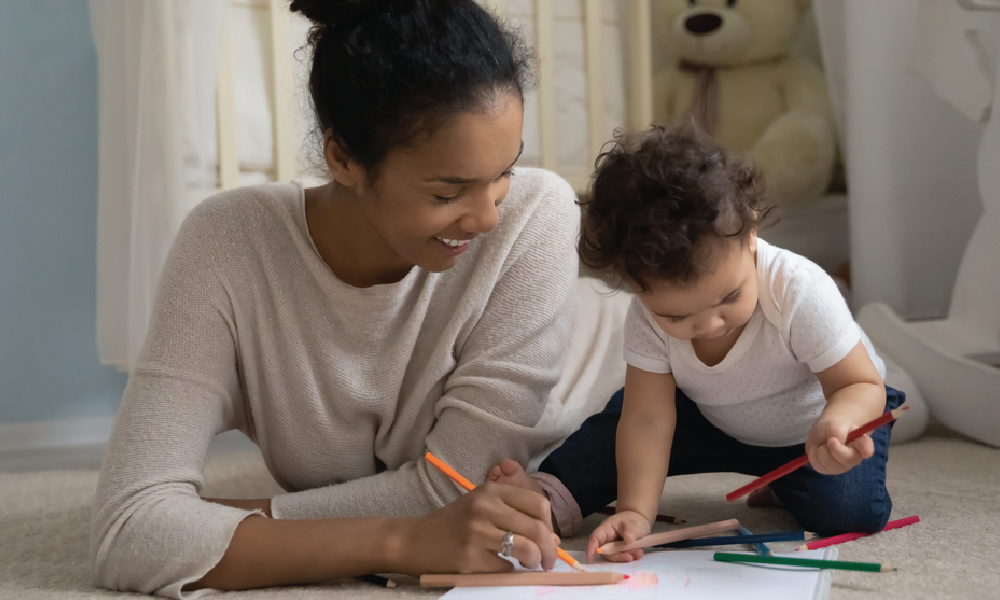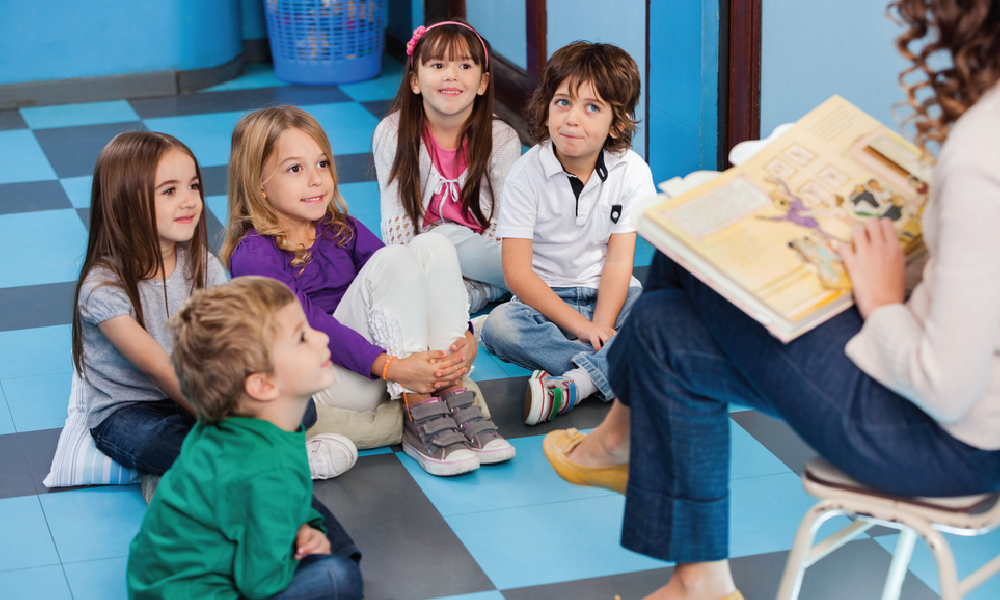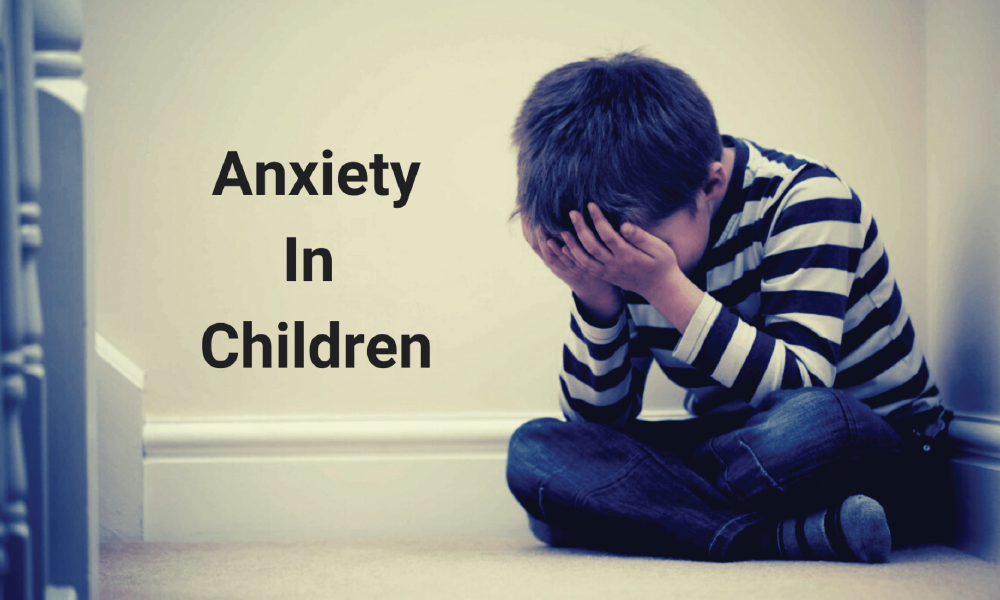10 Ways to Keep Your Child Motivated Have you ever wondered what keeps you motivated? As parents, we often wonder how can we keep our children motivated? How can we help our children find this motivation and drive to do better? Motivating kids today by bribing them or rewarding them will not go a long way, it should be developed in the kids from a young age and needs to be intrinsic. Times have changed and so have motivational factors; the older generation was motivated by a need and desire for a better life. This is not enough to motivate our children and we often see our kids unenthusiastic or unmotivated. Motivating kids today would involve giving them a sense of purpose for the work they do, the autonomy to follow their passion, and letting them learn from their mistakes. This comes from exploring their interests from a young age. Let them try their hand at different activities to see what interests them and what motivates your kids to do better. How to Motivate Your Kids – Trying new Things Let your child freely explore what it is that they enjoy doing. Be it art, dance, reading or any other hobby that they would like to explore. See what appeals to them and why. What motivates your kid to stick with that hobby? This not only helps them in learning new things and broadening their horizon but also helps in building confidence in the early years. When your child enjoys a certain activity, the child is motivated and looks forward to doing it more. Set Goals It is important to set short/long-term goals to motivate your child. Setting SMART (Specific-Measurable-Achievable-Relevant-Time based) goals will help in motivating your child. This will help your child in envisioning their goal and clearly define where they need to reach and the effort, they need to put in for it, which will, in turn, motivate your kids to strive to reach there and plan for it by breaking it into shorter goals. Emphasize Effort There no better motivation than reward. Celebrate your child’s success when they have accomplished a goal or for a job well done. Tell them that you’re proud of them and even reward them in a small way to reinforce the habit and further motivate your kid to do better. Build a reward mechanism for your child, this will help the child understand what he/she will gain when the task is done right. Healthy Competition Kids who have been involved in sports from a younger age are known to be more competitive and have the drive to win as compared to those that had not been a part of any competitive sport. Healthy competition motivates your child to do better, to hone and build their skills in order to defeat their opponent. The drive to win is what motivates your kids to do better. Resilience The true test of motivation is in adversity. Leave room for your kid to make mistakes and learn from them. Only when they will make mistakes, fail and learn from them will they be motivated to do better. This will also teach your kids that success doesn’t come easy, they will have to put in the effort to win. It builds the drive and motivates the child. Find their Passion There are 2 types of motivational factors, intrinsic & extrinsic. Extrinsic motivators are external/environmental motivators that motivate your child. Eg. Reward, appreciation, etc. Intrinsic motivation is what motivates your child to do a certain task/activity without any reward in return. This can be developed in your child if you let them follow their passion and do what they truly enjoy doing. This will motivate your kid to pursue their passion and progress in it. Be Inspiring Motivate your child by being role models and inspiring them. To motivate your child, let them see your struggle and how you deal with it. It is important that your child hears about your stressors and how you prevailed through them. This will help them realize that success needs persistence – the motivation to keep going in the face of adversity, the commitment to reach the goal that has been set, and the reliance to try again even if they have failed. Be Positive We often hear that the older generation was more resilient and faced storms with a smile on their face. Whereas, kids today easily succumb to anxiety and pressure. Having a positive mindset is a great motivator to keep going and keep your child motivated. A positive mindset can be built from an early age where the child is taught to see the silver lining in every situation, this also helps them see opportunities that they might otherwise miss. More importantly, a positive mindset will motivate the child to face adversity and keep going. Open Conversations There may be times where the child may feel unmotivated to do something. To motivate your child has an open conversation with them to explain to them why that is important for them and their future. Try to tell them motivational and inspirational stories to keep your child motivated to do something that may not excite them. Open dialogue and conversation will help them understand the WHY. Focus on the root cause Sometimes you may be left wondering why your child is unmotivated to do something and this may lead you to resort to pressure tactics, nagging, comparisons, or blackmail. These strategies may backfire and lead the child to be demotivated to do the activity or feel pressurised. We try to target the behavior rather than the root cause, try to reflect and see if you’re doing enough in order to motivate your child in the right direction. Motivation is the key to success; it is important that we teach our kids to be motivated to achieve their goals. Follow these simple ways to motivate your child to do more and do better. We hope that these points will help
25 Sensory Activities & Ideas For Kids & Toddlers Playing and learning don’t have to be different. Include sensory activities for toddlers in their daily routine and make learning fun! We adults can have a limited outlook on teaching and learning. We think of teaching our kids with flashcards, reading stories, memorizing alphabets, etc. These activities do have a place, but we forget that playing is a form of learning. In this article, we will talk about sensory activities for toddlers – definition, benefits, and activity ideas. Sensory play has been a naturally occurring form of learning for kids since the beginning of time. Tickle Right uses this technique and many others to foster growth, development and learning amongst preschoolers. What Is Sensory Play? Your child interacts with the world using their five senses, i.e., sight, hearing, taste, touch, and smell. Sensory play is a play that focuses on the activation and stimulation of these senses. Using these five senses, your child would learn and experience the world around them. Since children usually learn through playing, sensory activities are a form of play. Benefits Of Sensory Activities For Toddlers There are several benefits of sensory activities for children. They are Sensory activities help in the growth and development of children Toddlers can take vast amounts of information and form a working idea about the world. It’s an active form of play that helps the brain make new connections to deal with the increasing complexity of tasks and ideas. Sensory play helps in language development and makes them better readers. It develops mindfulness skills in kids, helping them deal with their emotions. Children build observation skills, fine and gross motor skills, social skills, abstract thinking, and experimentation. These activities are great for children with ‘sensory issues.’ Sensory issues in kids can look like difficulty in transitioning from one activity to another. Or freaking out about a particular sensation. 25 Sensory Activity Ideas For Your Toddler Or Preschooler Sensory play helps in the right brain development of your child. It stimulates their senses, creativity, and learning. Tickle Right has made a list of sensory activity ideas that you can incorporate into your toddler’s playtime. 1. Create A Sensory Bin A sensory bin is a container filled with different objects of different textures and sensations. You can fill the bin with natural objects like leaves, rocks, and sands. Food items like pasta, rice, and beans. Along with spoons, scoops, and toys buried in the mix. Kids tend to explore with their hands and mouths, so it is advisable to supervise, clean all items, and avoid choking hazards. 2. Playing With Food We understand playing with food can be a messy business, but it’s an excellent way for kids to do sensory learning. Studies show that kids who play with their food are more open to eating new foods. If you are worried about food play, you can differentiate between playtime and mealtime as different. 3. Play Dough You can buy playdough at your local store. Playdoughs are great for playing because of their soft and squishing texture. Children can enjoy hours of rolling, slicing, and chopping the play dough. If you wish to, you can even make playdough at home, adding your own colors and scents. 4. Sandbox Sandboxes are simple but extremely fun for your little one to play with. You can consider investing in a sandbox and some sand toys like shovels or cups to get them started. Once kids start playing, their imagination will take off, and they will have good fun. 5. Plant A Garden Gardening is something that you can do with your child. It can be something as small as planting a few seeds in a cup. This activity is a delight to the senses because of actions like digging in the dirt, weeding, watering plants, or smelling flowers and herbs. 6. Jumping Jumping will stimulate your child’s sense of movement. It is also a fun activity for them that channels their enormous amount of energy. You can include many jumping activities in your kid’s playing time, such as jump ropes, obstacle course, small exercise trampolines, and sitting on an exercise ball. 7. Finger Painting You can combine art and sensory play with finger painting. It can also be a helpful tool for kids to learn about color mixing. They will also have a blast being messy and making art. Kids will also develop fine motor skills, coordination, and creativity skills through finger painting. 8. Bounce On A Ball It can be a fun sensory activity plus exercise for your kind. If the ball is large, you can help your kid to push down the ball enough so they can bounce. If the ball is smaller, your child would be able to bounce themselves. Make sure the ball is in the right shape and size so they can straddle it comfortably. 9. Knee Rocking Horse Your toddler is still small enough to be able to bounce on a ball, or you might be worried they might fall over. In that case, you can rock them on your knees. Lay down on your back and support your kid on your knees to rock them back and forth. Otherwise, you can use rocking chairs, gliders, or rocking horses instead. 10. Swings Swinging is a classic playground activity that all kids love to play. You can include it more by adding tire swings in your backyard. You can also lay down your toddler in the middle of a blanket and swing them back and forth with the help of another person. This would add new sensations to your kid’s experience. 11. Push And Pull Toys Pushing and pulling activities stimulate the proprioceptive sense of children. It can have a calming effect on children. You can include this activity in your kid’s playtime by giving them a push toy or a toy shopping cart. You can even load
Effective Parenting Tips for Infants & Toddlers New parenthood can be a very fulfilling journey that is full of smiles and happiness but also new challenges. Everyone’s parenting style is different and it might take a while to figure out what works most effectively for your infant. We can always reach out to other parents and doctors to discuss parenting tips for toddlers that will make parenting smoother and more effective. Good parenting does not mean being perfect, it means deploying positive parenting techniques for the betterment and welfare of your child. There is no overnight trick towards becoming good parents, it is a gradual process that requires our attention. Here are a few important parenting tips for infants: 1. Love Wins Children respond well to love and care from an early age and this brings them a sense of comfort. Parenting tips for toddlers include showing your love everyday by simple acts like hugs, spending quality time, playing with them and doing activities that help you bond with them. Don’t mistake love for spoiling your children, effective parenting means showing your love without letting your child indulge in bad habits. 2. Importance of Quality Time Infants and toddlers are very receptive to positive parenting techniques as their brain is still developing. A good parenting tips for toddlers is giving them positive experiences from a young age that shape their personalities growing up. These experiences and activities also serve as good memory exercises for children and expand their scope of thinking. 3. Promote Good Self Esteem Another parenting tip for toddlers is knowing and recognising the importance of self esteem and how we need to build it from a very early age. Toddlers and infants can sense the environment around them, especially the words we use play a major role in their growth. Be kind, gentle and encouraging! When they do something bad don’t get angry and reprimand them, instead having a conversation and making them understand the consequences is more beneficial. 4. Reward Good Behaviour Rewarding and vocally encouraging good behaviour is a key parenting tip for toddlers and infants. For children at that age, there is no one more important than their parents so understandably, what the parents think and appreciate is very important to the child. Rewarding and encouraging also lets the child know what he should and should not do with regards to right and wrong. Rewards don’t mean extravagant gifts; treat your toddler with a trip to the park, a game they like to play, an extra 15 minutes of TV time etc. Also Read: How to Develop Child’s Emotional Intelligence 5. Express the Importance of Discipline For everyone in life good discipline is a crucial asset to have. A parenting tip for toddlers that we can impart on you is to always highlight the importance of discipline by practising it yourself as well. Children as spectators observe their parents and do the same things later on, so make sure you are acting as good role models in terms of discipline. 6. Become their Safe Place A positive parenting technique is letting your child know that they can always come to you about everything. Make communication and understanding your first priority and try to talk to them as much as you can. This not only boosts their confidence to be more vocal about their needs, it also enhances your bond with them. 7. Take Care of Yourself As a parent one must juggle between work, social and home life. It is easy to feel overwhelmed and fatigued at times, and it is absolutely fine to feel that way. Take some time off for yourself and rejuvenate yourself so you can take on your roles efficiently. Parenting tips for toddlers also includes taking care of yourself so you can be a good parent without burning out.
Benefits of Virtual Learning Environment for Kids at Home The year 2020 has been nothing short of a challenge for people from all walks of life, and as our focal point shifts from traditional in-person services towards virtual learning and meetings, we must learn how to be well equipped for the challenge. Children who are accustomed to going to school and being in that environment have had to suddenly stop and become familiar with the virtual learning practices that followed due to COVID-19. It suffices to say that along with the children, parents have also had to come up to the task of setting up an effective virtual learning environment and balancing their work and social life while having kids at home all the time. With that said, there have been many benefits of virtual learning environments that promote knowledge. Let’s look at some of the advantages of virtual learning: The Perfect Study Spot: This point is both an advantage of virtual learning and a way to optimize this experience. Our homes can be busy with errands especially during the morning hours when most of the online classes are carried out, so this gives both the child and parents the chance to collaborate in creating a peaceful virtual learning environment. The goal is to create a virtual learning environment that is comfortable and noise-free so that the child can sit there throughout the day without feeling excessively fatigued. The child learns the importance of creating a workspace that helps him get maximum output and learns about what he wants from his perfect virtual learning environment, like adequate lighting, charging spots, etc. Teaching the Importance of Having a Daily Plan: Being at home is not a chance to loiter around aimlessly. Virtual learning helps students have a daily planner of set tasks and goals they must achieve before the end of the day. An adequate virtual learning environment will entail having a list of these tasks and prioritizing them on the basis of urgency. The importance of virtual learning can be highlighted by teaching children important aspects of life that will benefit them in the long run. With support and vigilance, parents can create a virtual learning environment that serves in the best interest of the child and doesn’t make them miss school life. Enhances Technical Knowledge: Virtual learning has been a sudden change for every student as well as teachers. Now even a child as young as 7 years old must navigate through a Zoom call and submit assignments online. This has truly given the children a chance to enhance their technical knowledge from a very young age and in our mostly virtual world, it a very an essential skill to possess. The advantages of virtual learning can be utilized in many ways if parents know how to best utilize the resources at hand. Quicker Feedback: As opposed to traditional schoolwork, virtual learning has given teachers and students the opportunity to impart immediate feedback on homework and other assignments. This has definitely accelerated the learning process as students need not wait for long to get valuable feedback. A virtual learning environment is a place where students can also collaborate easily with other students and learn valuable lessons from each other. Also Read: 10 listening Skills Activities for Kids Significance of Netiquette: In order to keep up with our largely virtual world, children must be taught how technology works from an early age. Virtual learning environments have helped a great deal in catapulting children to learn technical applications. While navigating through the web and conversing with your peers and teachers through online learning classes, it is important to teach kids good online etiquette or Netiquette. These netiquettes include punctuality, dressing up adequately, waiting for your turn before you speak, and being a respectful cyber citizen. Helps Parents Learn About Their Child’s Learning Patterns: A virtual learning environment at home gives parents the chance to observe their child’s nature and habits during class. This can pave the way to improvement if needed in terms of better concentration, understanding, and getting help from teachers. Children might struggle in some classes but parents can be unaware of this, virtual learning will help them break through this barrier and help their children become better students and learners. Virtual learning environments promote pro-active learning and diligent one-on-one attention. In conclusion, the importance of virtual learning in today’s world cannot be denied. We must do our best to create a virtual learning environment that benefits the children and eases them into being comfortable with this change.
Tips to Build Confidence in Kids In today’s fast-moving world, we are increasingly seeing the changes in our social, academic and professional lives. Our focus is shifting towards a more holistic personality growth rather than just sticking to books. Raising confident children is paramount for parents today. Studies have shown that emotional intelligence and overall confidence strongly helps individuals secure their dream jobs and climb the social ladder. As parents, it becomes our duty to build confidence in kids, promote high self-esteem and intelligence that fits well in today’s professional and personal landscape. So how do we build confidence in kids? There are many confidence-building activities for kids that parents can practice every day to raise a confident child. 1. Learning from mistakes Confidence does not come from perfection. Fear of failure will only push the child into their shell. Parents should welcome mistakes and preach lessons that the child can learn from these errors. This will also teach the child problem-solving skills and help them scan situations adequately in the future. Encouragement and motivation are your two best allies that help build confidence in kids. 2. Appreciation goes a long way Whether wins or losses, parents should never demotivate the child. Appreciation is a tool that builds self-confidence in children and helps them become more sure of themselves. If they fail, then encourage resilience and determination to try again! These skills are important in real life and shape a balanced, motivated adult. 3. Value their opinion Allow your child to weigh in on day-to-day decisions, whether it is which restaurant to eat at or what kind of cereal to buy. These small decisions show the child that their thoughts and opinions are valued in the house. Feeling relevant and important in the household is an effective way to build confidence in children. 4. Set challenges and goals This is a great activity to build a child’s self-esteem – set goals! Children develop certain aspirations and dreams as they grow up and it is our job as parents to help them achieve these goals when they are realistic. If your child is sporty, then signing them up for a sport of their choice helps them realise their dream. If they like art, you can encourage them by giving them art lessons. Afterwards, ask them what they learnt and help them make small goals every week to be better at this skill. Having a unique skill set to build confidence in kids and sets them up for success. 5. Let them delegate! It is a Sunday and your child’s room is a mess? Delegate doable tasks to them and ask them to make a plan of how they will do it. For example, folding the clothes, making the bed, cleaning their table. Let this be a weekly or biweekly practise where the child feels in control of these tasks and takes responsibility. Being in charge of something makes the child feel important and builds self-esteem in other avenues of life too. These confidence-building activities are important in day to day life to teach the child valuable and beneficial lessons. 6. Welcome to new experiences: To raise confident children it is important to give them the opportunities that help them spread their wings. Parents should provide their children with fresh and new experiences that expand the children’s horizons and outlook of the world. A nurturing, stable home is important but new things every now and then are a great addition to build confidence in kids. An experienced mind is conditioned to deal with the world and whatever comes their way. Children who grow up trying new things and dealing with new environments tend to be great leaders and confident adults. 7. Love Goes A Long Way Parents’ attention and love are the most important tenets of a child’s positive growth. In adverse situations, a child looks to their parents for support and strength. Whether it is a bad grade in school or losing a competition, let the child know you love them regardless of what happens. Security and love are very valuable feelings that build confidence in kids. 8. Be a Role Model Yes, parenting can be a challenge, and oftentimes we may find ourselves feeling down and out. However, being a parent also means striving in the face of challenges for our children. Let your child see your optimism and confidence in hard situations. Inform them about the hardships but don’t dwell on it. Seeing their parents be optimistic and confident will influence a child’s way of thinking too. To raise a confident child, parents must practise confidence and positivity as well! With a few smart and effective practises around the house we can build confidence in kids and raise confident children that are thoughtful value leadership and success. We shouldn’t expect perfection from the get-go, allow errors and talk about it openly. Proper communication and patience by parents can go a long way in building confidence in kids.
6 Tips To Train A Kid’s Right Brain All children are born genius! Aren’t they? Since a child’s brain is the most progressive organ that we know of. Helping your little one make the best of their talent & unique skills is directly associated with it. You must engage your child in the right learning processes. These processes help you tap into your child’s potential & maximize their cerebral functions. The ability to plan, organize, and understand others’ perspectives helps them regulate their life well. A child’s brain development also aims to create a balance between both brain hemispheres. Since the two brain parts are closely connected by a web of neural fibers. It helps communicate with each other & sends signals. We at Tickle Right work towards creating the most splendid synergy amongst the hemispheres. The main purpose is not to only utilize the child’s right or left brain hemisphere. Instead, it’s an opportunity for your child’s brain more friendly with the learning processes. What Is Right Brain Education? Right Brain Education is an advanced child development program catering to specific child growth activities. It aims at helping children develop significant life skills. Like, such greater confidence, creative intelligence, photographic memory, emotional enlightenment, & others. It is specially designed for children between 1.5 to 7 years. Since the main purpose is to strengthen the right side of a child’s brain. It helps provide the right exposure to instill a lifelong love for learning in a fun yet interesting manner. A child’s brain intrinsically develops rapidly during the early years of their childhood. It provides the much-required exposure to help your child experience the wonders of right-brain training. It helps a child set the bedrock for better clarity of thoughts, academic excellence, & loving personality. Is Your Child A Right-Brained Dominant Learner? Do you often presume in doubt that your child is a right-brained learner? Because they would love to be shown than told to perform a task. It’s their unique way of understanding information & making it easy for themselves. The learning strengths of a child extend to processing new information via movements, visuals, and emotions. They primarily thrive on personal early childhood experiences & feelings to nurture their actions. It helps them stay connected with the environment. This reflects better efficiency as they learn about new things with the stimulation of their right-brained characteristics. In a world full of left-brain dominant learners, you must help your child pursue their talents strategically. It is important to think beyond conventional educational practices. The strengths of right-brain learners help them relate to a problem duly. They come up with unique logical solutions by also taking into consideration others’ emotions. However, your little one must be introduced to these learning opportunities from an early age. This helps them harness their strengths & build some skills around them. What Are Right-Brain Learner’s Characteristics? Right-brain learners are influenced by the extraordinary means of helping them process information. This excellent way of learning has a lot to do with their right-brained characteristics. Therefore, given below are the primary attributes of a right-brain learner – Kinesthetic Behavioral Learning Learning via physically understanding the subject matter Must be able to see, touch, or move the subject for better understanding Learns best about new things kinesthetically Visual Behavioral Learning Learning via concentrating on the whole picture Must be able to see the picture to break information down Remembers best with the memory of images Auditory Behavioral Learning Learning via listening carefully about the particular topic Must have the access to audiobooks, or even light music to process data Grasps better via listening, speaking, & interacting Emotional Behavioral Learning Relates with others based on their childhood experiences Must need some alone time to pick up the intention/emotion Performs best via being highly intuitive & connecting with emotions 6 Tips To Strengthen Your Child’s Right Side Brain Development Your child’s right brain development is an attempt to channel their attention into academic & non-academic brilliance. A left-brain dominant child would easily concentrate on getting their work done. They’re apt at planning & structuring their work. However, a right-brain dominant child utilizes their creative intelligence to get to the point. They love patterns, connections, pictures, & most of all games! They have a good memory to absorb information for longer durations. So, if you already recognize a few of these right-brained traits, contact us! Your child’s learning potential requires early & fun techniques to process information. Besides, here are a few tips to strengthen your child’s right side brain development: Rely On Visual Training Methods Visual training benefits extend to helping your child connect the dots. It helps sky-rocket their learning potential by simply relying on images. Since right-brain learners respond well to sketches, images, or flashcards. This helps develop a photographic memory for long-term data retention. You must introduce your child to a mind mapping approach. This helps process information in a visually empowered manner. This naturally boosts their learning potential. Tools such as presentations, patterns, rhymes, and graphic organizers shall work best for children. Use Hand Gestures/Body Movements Teaching directly from the textbooks isn’t enough for your little one. And as they assert, actions speak louder than words. Let’s chase it to help your little one! Using hand gestures or body movements helps a child directly relate to the subject information. They help them grasp better and improve their chances of successfully processing the information. It also encourages language & social development to promote overall communication development. While helping your child learn alphabets or rhymes, you must involve hand gestures. It helps them remember the sequence or associate with them. Don’t Limit Or Categorize Content The natural tendency to organize different bits of information is another common method of teaching kids. This is done to help a child extract information in a better manner. Although, this might not be the case with the right-brain learners. Presenting the whole
6 Practical Benefits Of Reading Bedtime Stories To Kids Reading bedtime stories to your little ones helps them connect with you more than ever. It’s like those age-old traditions between parents & their children that you must follow. But in today’s world, it’s much more than that. The routine of reading bedtime stories helps lift a child’s creative spirit, imagination, & promotes cognitive development. It’s an opportunity to spend a bit of quality time with your child. There are a lot of technology gadgets available to divide your child’s attention. Although, you must help your child build the habit of reading in your presence. This will expose them to different emotions, moral values, and a high attention span. Besides as per research, 70% of parents consider bedtime reading as a crucial part of their child’s routine. Whatever age group they belong to, sharing a story with them will add to their brain development. We at Tickle Right believe triggering a child’s brain potential with stimulating reading is very helpful. It helps them gain a fascinating insight. When To Start Reading Bedtime Stories To Kids? You can read bedtime stories to your little one as early as a child present in the mother’s womb. However, most parents do it at around 4-5 months of their child’s age. Since as per the doctor’s recommendations, you can start reading with your little one quite early. This will help them develop imagination & shall spark ideation to them. You must set a definite time at night between 7:00 to 9:00 pm before their bedtime. Since these times are considered the best, it will help them stay calm during the night. You must continue till this becomes part of their bedtime routine. What Are The Benefits Of Reading Bedtime Stories To Your Kids? Reading bedtime stories to your kids is the perfect opportunity to enhance your child’s learning abilities. This acts as a doorway to numerous other benefits contributing to their brain development. From diverse vocabulary to excellent language skills, here are the top 6 benefits of reading bedtime stories. ` Contributes To Cognitive Development Children need to process information by listening to stories that they hear. This practice of absorbing information begins even before they begin to speak. The habit of reading bedtime stories has a direct impact on a child’s brain development in other ways too. Like, it boosts their memory & helps build a long attention span. As your little child will grow up, they’ll get familiar with the new words. Stories help a child develop a love for learning & provides the correct knowledge to explore new things. It boasts a child’s brain development by encouraging fruitful conversations. Language & Communication Skills Kids often have the tendency to imitate their parent’s actions & words. Your little one learns to respond to your words & phrases. If you keep on repeating several words in a story, they get a hang of it. Your child will begin to use those words in their daily life. This also has a strong impact on your child’s speaking skills, listening skills, & linguistic recognition skills. You must build conversations around stories with your kid. Putting up questions related to it, or focusing on a character’s traits will expose them to new words & emotions. This will also help them adapt to their common language in no time. Build A Child’s Vocabulary Regular reading is a great way to boost your child’s vocabulary. And this applies to both children & adults! You must help your child develop the habit of reading at an early age. Stories expose children to new sets of words every day. It covers various topics & helps children understand the context of different areas. Like, grammar, affirmations, actions, & emotions. This lays the foundation for an effective language approach. There’s a huge difference in the scope of vocabulary for a child who is read & who is not. A 5-year-old child is able to comprehend 24,000 words by this time because of regular listening to stories. Social & Emotional Development A regular day hassle can impact a child’s well-being too. Yes, it’s not any different for young children. A child’s healthy social & emotional development helps to understand, express, & manage emotions in the early years. Exposing your little one to bedtime stories will familiarize them with different emotions & situations. You can leverage this situation to teach your child moral values & problem-solving skills. Stories are the means to introduce inspirational characters & gain emotional intelligence from the core message. This also helps develop an emotional vocabulary which helps them talk about their feelings. Help Build A Healthy Routine Reading your child’s bedtime stories helps develop a love for learning. Not only that, but it helps your child get into a routine for reading. It is important for children to understand the importance of following daily routines. This helps drive stability even for adults. This will also improve their personality & knowledge. Reading bedtime stories at a certain time every day contributes to building a healthy routine and shows children the importance of time. Growing up, these routines will surely change and develop as per their age. Stories Sparks Imagination Books are a great way to lift up your child’s imagination & willpower. It opens door to a lot of possibilities in their minds. Fairies, monsters, wizards, & what not? Since a regular story incorporates several characters. All of these leave a significant impact on your child’s mind. Children have the ability to connect with these stories and become curious. When we read to them it clicks their imagination and they become inquisitive & curious. Asking questions is a very healthy habit as it gives way to more knowledge and understanding in the long run. This also gives parents an idea of how their child’s mind works. 10 Bedtime Stories That You Must Read To Your Baby Here are the Top 5 bedtime stories
Top 10 Games & Activities To Develop Listening Skills In Kids If you’re looking for some simple yet effective ways to enhance your little one’s listening skills, you’ve come to the right end. Grabbing their divided attention or strengthening their ability to listen & respond appropriately requires time. Their ability to listen may seem like it is not important. However, it does not come intrinsically at a young age. It entails several aspects like coordination & control that require constant nurturing over the initial years. A child’s sense of hearing starts to build in a mother’s womb itself. They initiate responding to their mother’s voice soon after birth. At this stage, a child is still not listening, so don’t puzzle between the two. As they grow, they recognize & react to noises. They learn to differentiate between them which lays the groundwork for language & communication. In turn, speech, building attention, reading & phonological enlightenment. We at Tickle Right encourage participation & value listening for the development of your child’s good listening skills. Read ahead to know more. Top 5 Listening Activities For Children The best listening activities have the ability to develop language skills, social skills, & auditory perception. It is one of the most important parts of a child’s wholesome cognitive development. You can consider it as a means to develop these skills with lasting-affect fun activities. 1. Read Stories Daily reading helps a child improve their listening skills by engaging them in stories of different characters. This helps them comprehend the part effectively & understand the sentence structure too. Always remember to put up questions about the next predictions. Another way to listen to these stories is through audiobooks. It not only improves reading accuracy by 52% but also promotes brain development & language skills. 2. Initiate Conversations Conversation skills encourage children to think about new ideas & explore topics that interest them. This is also a means to introduce interesting facts that engages them in active listening. Through an opportunity like this, you allow your children to express their viewpoints & indulge in the discussion. These two-way conversations are incredibly great for children to listen to & convey simultaneously. 3. Become A Model Listener You are your child’s biggest role model. They will leave no chance behind to copy your behavior & actions. Therefore, they are willing to learn from the best. Modeling behavior like active listening to your little one or maintaining eye contact during the conversation catches their attention. You must give due consideration to what your child’s saying to make them follow the same with you & the others. 4. Play The Directions Game Teaching your child to listen & follow directions strengthens their logical & listening skills. It allows them to think about what they’re being asked to do & decide to follow it then. This activity allows them to actively listen to the instructions. The overall objective of such a game is to help them develop a helpful behavior with reasoning & problem-solving abilities. Some of these games are Musical Chairs, Simon Says, Statues, & many more. 5. Flashcards Listening Oh, what better than listening with flashcards! There are several benefits of teaching your child important skills with the help of flashcards. It allows for building photographic memory & sparks visual stimulation. This presents an opportunity to create your own games to engage them in listening carefully. Such as, placing a pack of flashcards on the floor or a table. Randomly call out words and ask your child to pick up the flashcard that resembles it. 5 Fun Listening Skills Games For Kids Parents often struggle to get their children to listen to them. It’s a tough task after all. Most parents would agree with the thought. However, the most fun listening games will intrigue them unknowingly in developing their listening skills typically. So, check out these listening activities for your little one – 1. Whisper Game Whisper game or ‘Broken Telephone’ is a great way to teach & improve listening skills to children. It is played with a group of people sitting next to each other. It begins with one person whispering a phrase to the neighbor person. Next, this person whispers the same to the next person. This carries around until the last child says the sentence aloud to the group. One of the main objectives of this game is to build the habit of careful listening. 2. Simon Says Simon says is another great activity to activate listening skills in kids. It extends to developing great impulse control & get your child moving. The game is about fun instructions & how it has to be only followed by children when the speaker says ‘Simon Says’ before it. Some of the examples of these instructions are “dance with your hands still” or jump on one leg”. But it is to only be followed if followed by Simon Says. 3. Musical Chairs Musical chairs is a classic listening game to be played in a group, especially at parties. It instills patience, argument resolving skills, and teaches how to deal with disappointment. The game is very fun & requires children to walk around a number of chairs placed in a line. They have to walk until the music stops. When it stops, everyone has to sit in a chair. The person who is left standing is out. This is a chance to hear the music carefully & take steps. 4. Freeze Dance Freeze game is loved by many kids & even grown-ups. It is a musical statue game that helps develop motor skills, listening skills, and social-emotional skills. The game is played with a group where one person is in charge of playing & stopping the music. You can begin the game by starting the music, meanwhile, the rest of the kids dance their hearts out. When the music stops, they have to freeze. The person-in-charge checks whether anyone moves
Fine & Gross Motor Skills Development In Children Amongst other skill-building traits, the development of a child’s fine & gross motor skillset demands movements. Like cognitive, emotional, & social skills, these physical skills cultivate their ability to grasp, hold, pinch, walk, run, and what not? As these movements are a must for everyday tasks to vitalize their action control. Strengthening these small & big muscles promotes balance & coordination in your little one’s whole body. The best way to encourage fine & gross motor skills in early childhood is by incorporating play-based activities. Their motor skills development begins right from the upward & moves downwards the body. Therefore, your child will be able to control their neck & head movements first followed by their back. The development of gross motor skills in each body part will be prior to fine motor skills development. Therefore, we at Tickle Right focus on enhancing such skills by exposing them to the most popular motor skills activities. What Are Fine & Gross Motor Skills? Fine Motor Skills are the strength development traits related to minor movements of small muscles. These muscle sets intrinsically involve fingers, toes, wrists, & others. They play an integral part in many day-to-day life activities. Such as picking up something, buttoning/unbuttoning, eating food with a fork, tying shoelaces, writing, coloring, & others. The main purpose of these skills entails control & coordination between small muscles. Gross Motor Skills are the strength development traits related to bigger movements of larger muscles. These muscle sets intrinsically involve arms, legs, feet, & others. Besides, these skills enable children to sit, stand, walk, run, jump, swim & do much more. It engages the core muscles of your child’s body & facilitates hand-eye coordination. Their active role in boosting the brain’s neural pathways promotes instant reflex reactions. What Is The Difference Between Fine & Gross Motor Skills? Motor skills development is largely classified into Fine Motor Skills & Gross Motor Skills. On the one hand, the gross motor skills in a child’s body extend to the movement & coordination of large muscles. It typically involves muscle sets leading to actions like sitting, standing, crawling, walking, & others. However, fine motor skills on the other hand pertain to skills including small muscles. They set into motion activities like holding an object, drawing, writing, peeling fruits, & vegetables, etc. Developmental Milestones For Fine & Gross Motor Skills The following are the general developmental milestones in terms of fine & gross motor skill building – 1-2 Years Stands & picks up tiny objects Sitting, crawling, walking on their own Turning pages of books Opens a door knob Walk up & down the stairs 2-3 Years Holds crayon with fingertips Jump with both feet in one place Draw dots, lines & circles Snips pages with scissors Rides bicycle with pedals 3-4 Years Moves fingers more independently Makes more precise drawings Handles simple dressing Use playdough to make edibles Jump with both feet simultaneously 4-5 Years Copying of cross & square Throws ball & catches it at bounce Write names & numbers Walks a balance beam Able to button clothes Top 5 Fine Motor Activities For Kids The best motor skills activities for kids will help them with muscle movement & coordination. Achieving such muscle control takes time. However, if paid attention at a young age, your little one will be controlling their moves in no time. 1. Art & Painting Practicing art & painting is a great fine motor activity for young kids. Not only does it stimulate creativity & expression, but also builds finger, wrist, & hand dexterity. It improves their hand-eye coordination & encourages fine motor skills. You can help your kids try finger painting, pour painting, painting with bubble wrap, & splatter painting. 2. Playing Dough Another excellent activity to keep your little one busy & build strength in their little hands is play dough. When kids give different shapes & forms to play dough using their little hands, it builds strength. The rolling & squishing dough movements promote fine motor skills with a healthy playtime! It’s an effective means to develop control & coordination. 3. Getting Dressed Who doesn’t love to get all dressed yeah! It’s time to build your child’s confidence & encourage them to get dressed on their own. It’s a way to teach them the virtues of getting independent & promote hand dexterity. Activities like buttoning/unbuttoning, zipping, and tying shoes promote flexibility, balance, coordination, & strength. 4. Solve Puzzles Puzzles play an important role in building reasoning skills & developing problem-solving approaches. As children handle small & large puzzle pieces, it significantly impacts the coordination of their small muscles & improves their intellect level. Picking up & arranging these pieces makes their hand & eye work together. 5. Sponge Play Squeezing a sponge out of a bowl filled with water is the best way to promote fine motor skills. It helps children comprehend the concepts like complete, empty, wet, & dry. You can add fun toys or buy different shapes of sponges for your little one. This will make the overall activity interesting & strengthen their hands & forearms. Best 5 Gross Motor Activities For Preschoolers Children love moving, jumping, climbing, & whatnot! These activities will encourage your toddlers & preschoolers to gain large muscle control. Achieving this will significantly simplify handling simpler tasks & moving toward long-lasting health. 1. Dancing Your child’s amazing dance skills can do much more than bring a smile to everyone’s faces. It is a great form of exercise that has shown proven significant benefits in the gross motor development of kids. It promotes balance & coordination via movements during the dance. It should come as no surprise that it’s best to develop a child emotionally, socially, & cognitively. 2. Outdoor Games Outdoor games play a great role in stimulating a child’s whole body movement towards improving balance & gross motor development.
In today’s world, people are plagued by a plethora of diseases and disorders. One of them is anxiety. Those who are not aware of what anxiety is must realize that it is a mental health disorder that is associated with feelings of worry and fear. Severe anxiety can prove to be debilitating as it disrupts an individual’s daily routine. Anxiety disorder includes panic attacks and even post-traumatic stress disorder ( PTSD ). While anxiety is usually found among adults, toddler anxiety is now on the rise. If you look around, you will find that anxiety in kids is becoming a common occurrence by the hour. More and more children are becoming susceptible to this disorder at a very young age. Anxiety in children might often go unnoticed as babies are unable to express their feelings and emotions in an articulate manner. As caregivers, it is our responsibility to identify common symptoms such as constant crying or uncontrollable outbursts. Once we’ve discovered what ails our little ones, helping kids with anxiety becomes easier with proper precautions and medical intervention. If you look around, you will find that anxiety in kids is becoming a common occurrence by the hour. More and more children are becoming susceptible to this disorder at a very young age. Anxiety in children might often go unnoticed as babies are unable to express their feelings and emotions in an articulate manner. As caregivers , it is our responsibility to identify common symptoms such as constant crying or uncontrollable outbursts. Once we’ve discovered what ails our little ones , helping kids with anxiety becomes easier with proper precautions and medical intervention. What Are The Symptoms Of Anxiety In Children? Inability to concentrate. Loss of appetite and not eating properly. Constant stomach aches and digestive issues. Incessant crying. Being clingy. Irritability, negative thoughts, and uncontrollable outbursts. Sleeplessness and sleepwalking can also be found in some cases. How To Help A Child With Anxiety? There are a few methods to treat childhood anxiety that are recommended by doctors. Some of them are as follows : Counseling is one of the most effective methods of treatment. Here, professionals help in locating the source of anxiety. Upon recognizing the source and causes of anxiety, an appropriate treatment plan can be charted for desired results. Cognitive-behavioral therapy (CBT) is another form of therapy where the professional talks to your child and helps them cope with their anxiety in a healthy manner. In severe cases , anti-anxiety medication may be prescribed in order to help children with anxiety. What Can You Do As A Parent ? Helping children with anxiety requires much more than just counseling or medication. Parental support and involvement is bound to play a major role in alleviating childhood anxiety. There exist multiple factors that contribute to anxiety in children. Some of them are : Parents fighting and arguing endlessly. The constant moving of houses or changing schools. Feelings of neglect. Parents not spending enough quality time with their children. Bullying in school or outside. Constant academic pressure. Falling ill, getting into an accident, or losing a close family member or friend. Tackling these situations with sensitivity, compassion, and empathy is of utmost importance. Failure to do so might worsen your child’s anxiety. If you believe your child’s condition demands professional help, seeking it in time will make all the difference.









